Xinting Zhu
Embodied Crowd Counting
Mar 11, 2025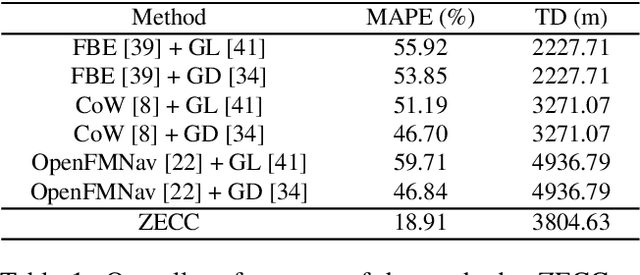
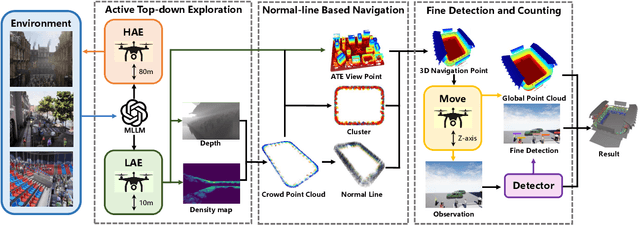


Abstract:Occlusion is one of the fundamental challenges in crowd counting. In the community, various data-driven approaches have been developed to address this issue, yet their effectiveness is limited. This is mainly because most existing crowd counting datasets on which the methods are trained are based on passive cameras, restricting their ability to fully sense the environment. Recently, embodied navigation methods have shown significant potential in precise object detection in interactive scenes. These methods incorporate active camera settings, holding promise in addressing the fundamental issues in crowd counting. However, most existing methods are designed for indoor navigation, showing unknown performance in analyzing complex object distribution in large scale scenes, such as crowds. Besides, most existing embodied navigation datasets are indoor scenes with limited scale and object quantity, preventing them from being introduced into dense crowd analysis. Based on this, a novel task, Embodied Crowd Counting (ECC), is proposed. We first build up an interactive simulator, Embodied Crowd Counting Dataset (ECCD), which enables large scale scenes and large object quantity. A prior probability distribution that approximates realistic crowd distribution is introduced to generate crowds. Then, a zero-shot navigation method (ZECC) is proposed. This method contains a MLLM driven coarse-to-fine navigation mechanism, enabling active Z-axis exploration, and a normal-line-based crowd distribution analysis method for fine counting. Experimental results against baselines show that the proposed method achieves the best trade-off between counting accuracy and navigation cost.
Diffusion-based Method for Satellite Pattern-of-Life Identification
Dec 14, 2024



Abstract:Satellite pattern-of-life (PoL) identification is crucial for space safety and satellite monitoring, involving the analysis of typical satellite behaviors such as station-keeping, drift, etc. However, existing PoL identification methods remain underdeveloped due to the complexity of aerospace systems, variability in satellite behaviors, and fluctuating observation sampling rates. In a first attempt, we developed a domain expertise-informed machine learning method (Expert-ML) to combine satellite orbital movement knowledge and machine learning models. The Expert-ML method achieved high accuracy results in simulation data and real-world data with normal sampling rate. However, this approach lacks of generality as it requires domain expertise and its performance degraded significantly when data sampling rate varied. To achieve generality, we propose a novel diffusion-based PoL identification method. Distinct from prior approaches, the proposed method leverages a diffusion model to achieve end-to-end identification without manual refinement or domain-specific knowledge. Specifically, we employ a multivariate time-series encoder to capture hidden representations of satellite positional data. The encoded features are subsequently incorporated as conditional information in the denoising process to generate PoL labels. Through experimentation across real-world satellite settings, our proposed diffusion-based method demonstrates its high identification quality and provides a robust solution even with reduced data sampling rates, indicating its great potential in practical satellite behavior pattern identification, tracking and related mission deployment.
Multi-Graph Convolutional-Recurrent Neural Network (MGC-RNN) for Short-Term Forecasting of Transit Passenger Flow
Jul 28, 2021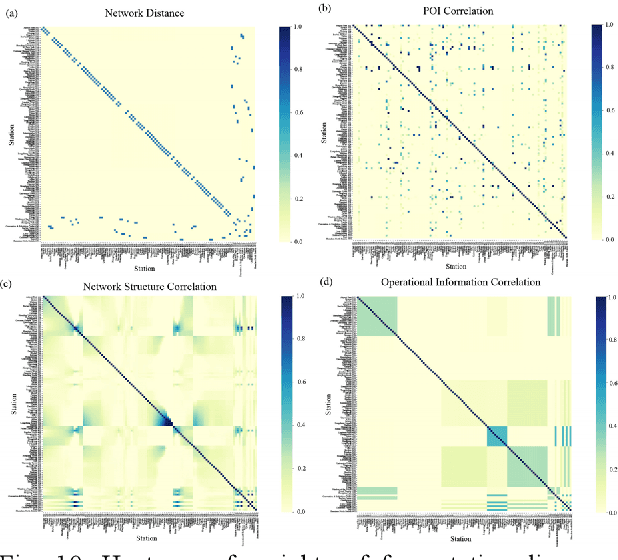
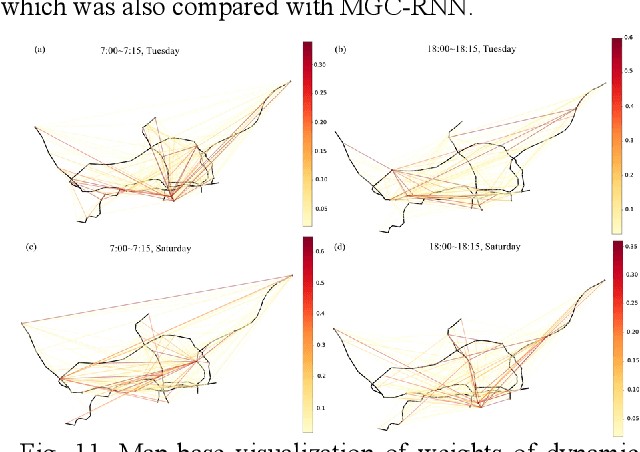
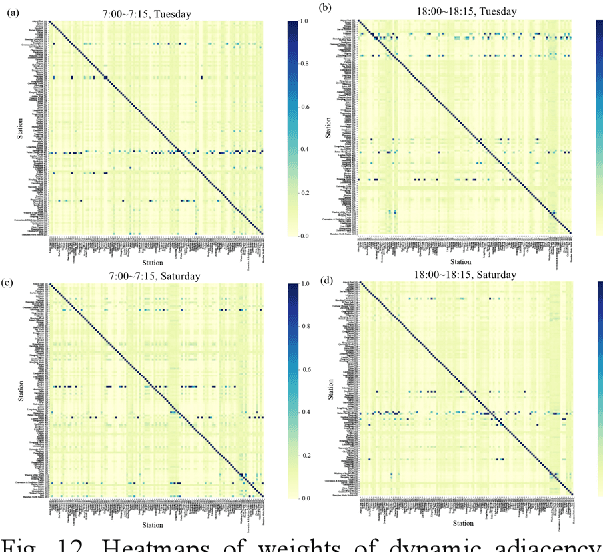
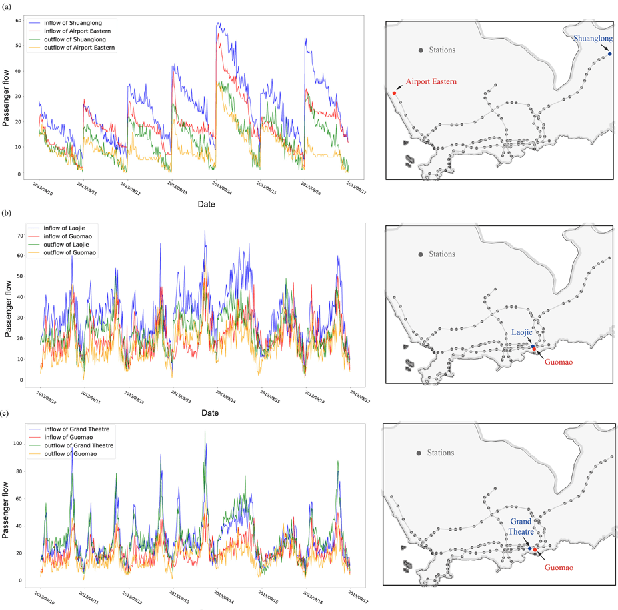
Abstract:Short-term forecasting of passenger flow is critical for transit management and crowd regulation. Spatial dependencies, temporal dependencies, inter-station correlations driven by other latent factors, and exogenous factors bring challenges to the short-term forecasts of passenger flow of urban rail transit networks. An innovative deep learning approach, Multi-Graph Convolutional-Recurrent Neural Network (MGC-RNN) is proposed to forecast passenger flow in urban rail transit systems to incorporate these complex factors. We propose to use multiple graphs to encode the spatial and other heterogenous inter-station correlations. The temporal dynamics of the inter-station correlations are also modeled via the proposed multi-graph convolutional-recurrent neural network structure. Inflow and outflow of all stations can be collectively predicted with multiple time steps ahead via a sequence to sequence(seq2seq) architecture. The proposed method is applied to the short-term forecasts of passenger flow in Shenzhen Metro, China. The experimental results show that MGC-RNN outperforms the benchmark algorithms in terms of forecasting accuracy. Besides, it is found that the inter-station driven by network distance, network structure, and recent flow patterns are significant factors for passenger flow forecasting. Moreover, the architecture of LSTM-encoder-decoder can capture the temporal dependencies well. In general, the proposed framework could provide multiple views of passenger flow dynamics for fine prediction and exhibit a possibility for multi-source heterogeneous data fusion in the spatiotemporal forecast tasks.
Data-driven Method for Estimating Aircraft Mass from Quick Access Recorder using Aircraft Dynamics and Multilayer Perceptron Neural Network
Dec 10, 2020

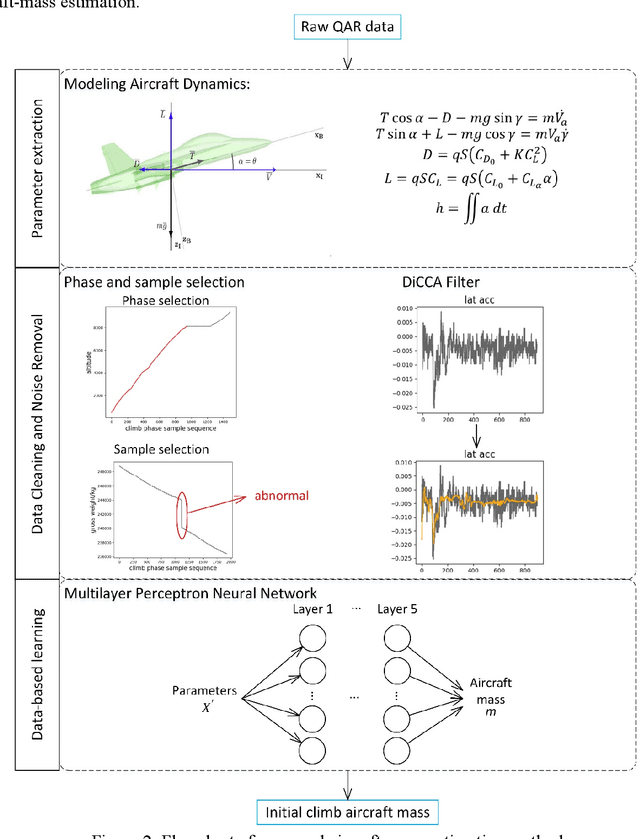
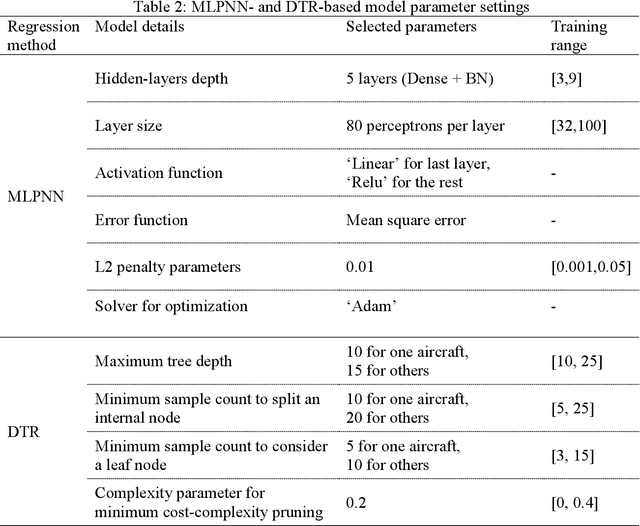
Abstract:Accurate aircraft-mass estimation is critical to airlines from the safety-management and performance-optimization viewpoints. Overloading an aircraft with passengers and baggage might result in a safety hazard. In contrast, not fully utilizing an aircraft's payload-carrying capacity undermines its operational efficiency and airline profitability. However, accurate determination of the aircraft mass for each operating flight is not feasible because it is impractical to weigh each aircraft component, including the payload. The existing methods for aircraft-mass estimation are dependent on the aircraft- and engine-performance parameters, which are usually considered proprietary information. Moreover, the values of these parameters vary under different operating conditions while those of others might be subject to large estimation errors. This paper presents a data-driven method involving use of the quick access recorder (QAR)-a digital flight-data recorder-installed on all aircrafts to record the initial aircraft climb mass during each flight. The method requires users to select appropriate parameters among several thousand others recorded by the QAR using physical models. The selected data are subsequently processed and provided as input to a multilayer perceptron neural network for building the model for initial-climb aircraft-mass prediction. Thus, the proposed method offers the advantages of both the model-based and data-driven approaches for aircraft-mass estimation. Because this method does not explicitly rely on any aircraft or engine parameter, it is universally applicable to all aircraft types. In this study, the proposed method was applied to a set of Boeing 777-300ER aircrafts, the results of which demonstrated reasonable accuracy. Airlines can use this tool to better utilize aircraft's payload.
Improved Flight Time Predictions for Fuel Loading Decisions of Scheduled Flights with a Deep Learning Approach
May 12, 2020



Abstract:Under increasing economic and environmental pressure, airlines are constantly seeking new technologies and optimizing flight operations to reduce fuel consumption. However, the current policy on fuel loading, which has a significant impact on aircraft weight, leaves room for improvement. Excess fuel is loaded by dispatchers and(or) pilots to ensure safety because of fuel consumption uncertainties, primarily caused by flight time uncertainties, which cannot be predicted by current Flight Planning Systems (FPS). In this paper, we develop a novel spatial weighted recurrent neural network model to provide better flight time predictions by capturing air traffic information at a national scale based on multiple data sources, including Automatic Dependent Surveillance - Broadcast, Meteorological Airdrome Reports, and airline records. In this model, we adopt recurrent neural network layers to extract spatiotemporal correlations between features utilizing the repetitive traffic patterns and interacting elements in aviation traffic networks. A spatial weighted layer is introduced to learn origin-destination (OD) specific features, and a two-step training procedure is introduced to integrate individual OD models into one model for a national air traffic network. This model was trained and tested using one year of historical data from real operations. Results show that our model can provide a more accurate flight time predictions than the FPS and the LASSO methods, especially for flights with extreme delays. We also show that with the improved flight time prediction, fuel loading can be optimized to reduce fuel consumption by 0.83% for an example airline's fleet without increasing the fuel depletion risk.
 Add to Chrome
Add to Chrome Add to Firefox
Add to Firefox Add to Edge
Add to Edge